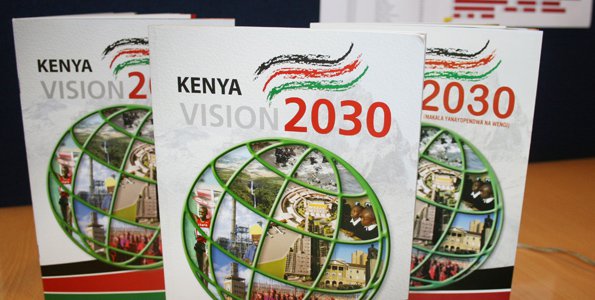
By FRANCIS MUTHAURA
About a decade ago, Kenya embarked on a journey of a kind – to paint a long-term picture of the future. This journey that produced Vision 2030 was a break from tradition as national development was previously guided by five-year development plans.
The crafting of Vision 2030 was inspired by the implementation of the ‘Economic Recovery Plan for employment and wealth creation’, an economic blueprint by the Narc government. Originated in 2003 by the newly-elected government, it was fine-tuned and cross-fertilised with inputs from the then civil service that converted it into an implementable policy document.
Implementation started after Cabinet approval and endorsement by Parliament, delivering results beyond expectation. There had never been a government plan that successful – pushing economic growth rate from a sluggish one per cent at the end of 2002 to seven per cent in 2007.
PRIVATE SECTOR
Ministers and the civil service as well as investors were inspired to dream even bigger. This led to the eventual establishment of the National Economic and Social Council (NESC) that brought together representatives of government, private sector and international experts to offer advice on broader socio-economic transformation programmes. Initially proposed by Prof Anyang Nyong’o, then Minister for Planning and Economic Development, it was chaired by then President Mwai Kibaki, with Finance Minister David Mwiraria as alternate chair. The idea of crafting a long-term development vision was broached at a meeting to report to the President on outcomes of the initial meeting of NESC. President Kibaki asked the council to report back in a fortnight, leading to the roping in of management consulting firm, McKinsey. A high-level workshop comprising Ministers and Permanent Secretaries and representation of CEOs of top companies and private sector organisations was convened in Naivasha to discuss a concept paper on a long-term vision for the country. The discussion focused on four broad pillars for socio-economic transformation namely; Political, Economic, Social and the Enablers.
QUALITY LIFE
The ultimate vision that was crafted benchmarked with South Africa, Malaysia, Singapore and South Korea – not just on the countries’ economic growth, but also the quality of life for citizens. It was fashioned around the pillars — the political pillar to promote issue-based, people-centred politics for national cohesion and equitable sharing of resources; economic pillar to deliver better incomes for all and inclusive growth; and social pillar to ensure a high quality of life. Enablers would be a sound foundation to facilitate delivery of benefits from the other pillars. This document was finalised and unveiled on June 10, 2008.
Looking back, it fills me with pride. The dream that became Vision 2030 has transformed the country. In just about a decade, the national GDP has increased more than five-fold, from just $12 billion when Narc took over to over $72 billion today. The investment in infrastructure has transformed the country and opened it up. The devolved system of government has taken root, creating opportunities and delivering benefits across the country. More importantly, the country was able to agree on one of the most liberal constitutions in the world to entrench democracy, rule of law and devolution. Both the Constitution and the fast socio-economic transformation taking place in the country are closely associated with Vision 2030.
APPLICABLE LESSONS
Throughout the journey of crafting this vision, and 10 years into implementation, a few lessons stand out. The vision identified a few high-impact sectors, flagship projects and programmes to spearhead growth and transformation. The targets were set high and the operational modality was business unusual. The sectors and projects selected included agriculture, tourism, manufacturing, retail and wholesale, financial services, ICT, roads, energy, education, health and housing, LAPSSET, Konza City, the Jomo Kenyatta International Airport as regional hub, SGR and Mombasa Port and Special Economic Zones. These lessons are applicable in the future.
First, the process of developing the vision has to be inclusive to succeed. To craft and deliver a vision, it is important to involve and convince as many people as possible so as to create and sustain the momentum. It is in realisation of this that the process of developing Vision 2030 was deliberately inclusive, with a variety of stakeholders involved across the political divide in addition to robust public participation.
HUGE STRIDES
Consequently, it was not an exclusively government-driven process, but an all-inclusive one where involvement of the private sector was particularly instrumental. Whereas more work remains to be done to deliver to Kenyans the promised land, huge strides have been made.
The challenge is now to consolidate the gains and learn from the lessons.
The writer is a retired Head of Civil Service and was involved in crafting Vision 2030. fmuthaura@lapsset.go.ke.
https://www.nation.co.ke/oped/opinion/Vision-2030-holds-the-key-to-a-better-and-more-inclusive-Kenya/440808-4602584-feyaxi/index.html
